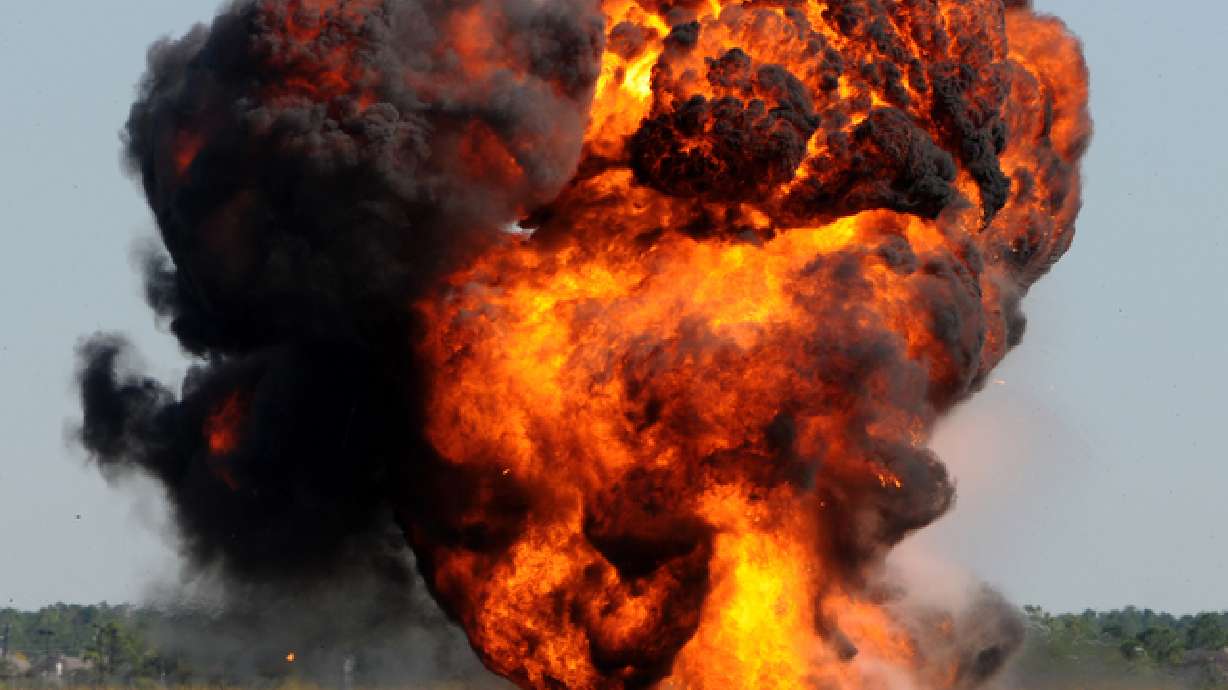Estimated read time: 4-5 minutes
This archived news story is available only for your personal, non-commercial use. Information in the story may be outdated or superseded by additional information. Reading or replaying the story in its archived form does not constitute a republication of the story.
SALT LAKE CITY -- Great balls of fire! It's a question that would definitely light a flame under the guys from "MythBusters" -- just how big of an explosion could the average Joe realistically survive?
An article published this week on the i09 website set out to explain and answer that age-old -- and slightly bizarre -- query.
In the movies, explosions are all about the spectacular fireballs and glitzy actors flying through the air. Amazingly, these dashing -- and seemingly indestructible -- people regularly walk away unscathed. Who can forget the haunting image of Heath Ledger's Joker strutting away from the hospital as it gets blown to bits in "The Dark Knight?" (By the way, [Popular Mechanics](http://www.popularmechanics.com/technology/digital/visual-effects/4322723) names that scene as the best movie explosion of all time.)But here's the real deal: the visual aspects of an explosion -- fire and shrapnel -- are not always the most destructive. The blast wave is where the real power lies. Simply put: when something explodes, it pushes a huge amount of compressed air out of the way very quickly, then creates a partial vacuum. According to How Stuff Works, a vacuum -- in this case -- means really, really strong and fast winds. Winds that can lift a person into the air and blow them around like a feather.
All this got me thinking. If I were to be caught in a blast, which kind would be the least damaging to my livelihood?
There are seven main kinds of explosions: natural, chemical, nuclear, electrical, vapor, astronomical and mechanical. Let's take a closer look at the wackiest of the bunch.
- Natural explosions, believe it or not, occur in nature. The most common being volcanic, while the most wacky being exploding trees and animals -- where oils, fats and decomposition materials spontaneously combust. Gross, but true.
- Chemical explosions occur after a rapid and violent oxidation creates a huge amount of piping hot gas. Common examples of chemical explosives include gunpowder and dynamite.
- Nuclear explosions are among the most deadly and powerful of the pack. They derive their force from a nuclear reaction of fission and fusion. A single nuclear weapon can level an entire city, as evidenced by Hiroshima during World War II.
- Electrical blasts are created by something called an arc flash -- essentially a high-energy current that vaporizes metal and insulation. These explosions are most common when working with high-voltage switch gear.
- Boiling liquid expanding vapor explosions -- or BLEVE -- happen when a container of pressurized liquid exceeds its boiling point and blows up. Think dry ice bombs or propane tanks .
- Supernovas, gamma ray bursts and solar flares are examples of astronomical explosions. Remember that dreaded asteroid in "Armageddon?" If Bruce Willis had let it hit earth, it would have caused an astronomical explosion of epic proportions.
- And finally, there's the mechanical explosion. This happens when a sealed container bursts because of internal pressure. Just toss a can of beans in the fire and you'll see the process in action.
I'm pretty sure I wouldn't want to be present for any of these blasts.
So back to our original question: how do you survive an explosion?
Your best bet: follow in Forrest Gump's footsteps and run as fast as your legs will carry you. And cover those ears, if you can.
Distance is your best defense, seeing as how force decreases the further it travels.
That, and don't play with fire in the first place.
Email: Jessica Ivins









